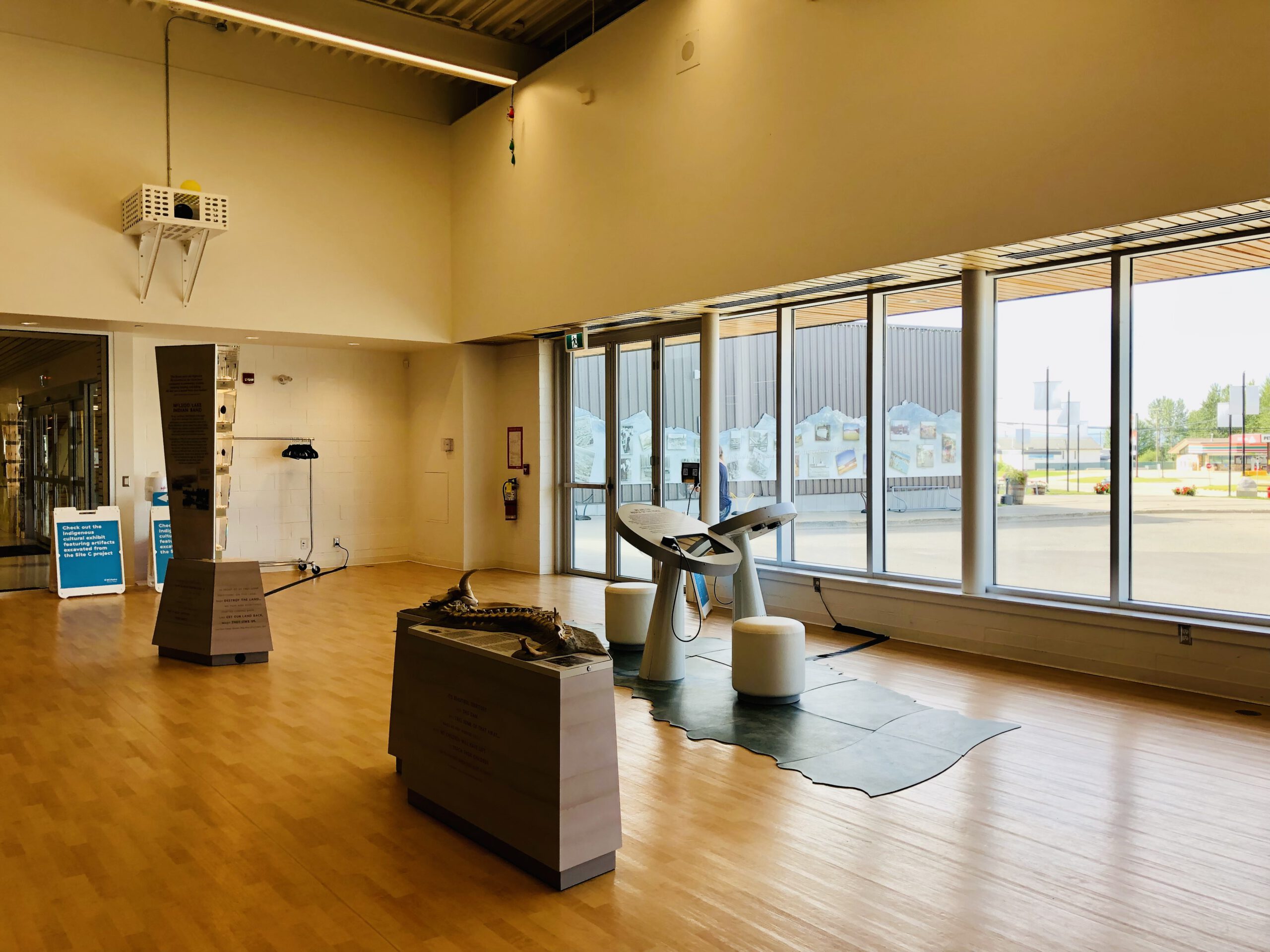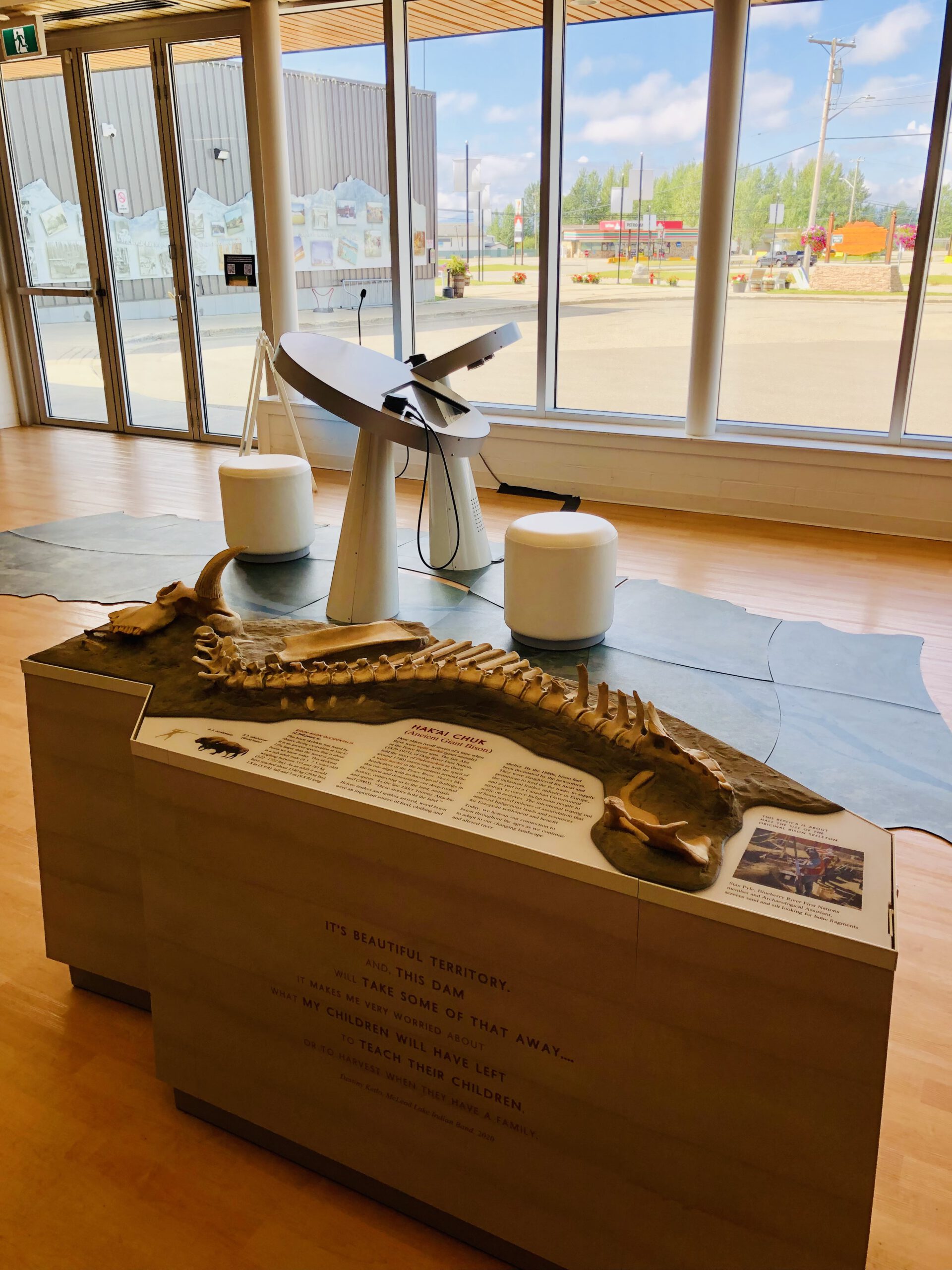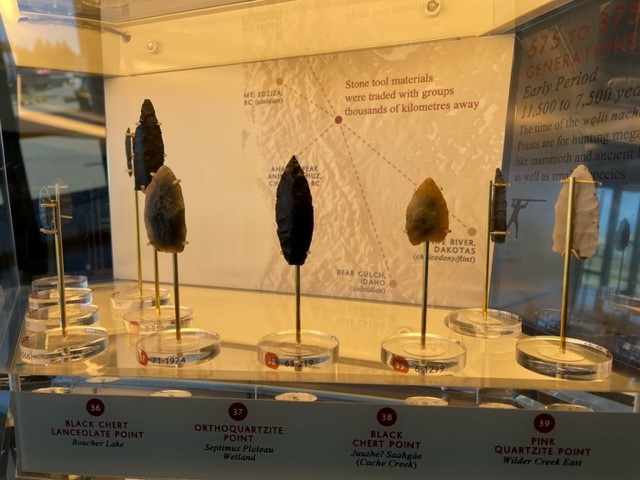Cultural Exhibition at the Recreation Centre





Until August 31, visit the Sas Da'Ghe Room in the Recreation Centre to check out the travelling Indigenous Cultural Exhibit brought to you by the McLeod Lake Indian Band.
This interactive exhibit provides visitors with an opportunity to learn about the Indigenous artifacts found through Site C archeological excavations. Artifacts recovered along nearby trails and sites, such as Tse'k'wa, tell the story of Indigenous peoples' history in the area.
The travelling exhibit documents past use of the area, stories from various communities, and to commemorate sites that will be lost due to filling of the Site C reservoir. It includes important archaeological evidence uncovered from the Site C construction area which spans from the time of giant animals 12,500 years ago until the recent past within living memory. In the exhibit, you will hear different voices and read important information connected to the artifacts found in the Site C archeological excavations, including trails and nearby sites such as Tse’k’wa.
You can also listen to recordings of Indigenous community members sharing stories about their ancestors' use of the land, spiritual places, current cultural activities, and their communities' resourcefulness and resilience.
On the self-guided tour you'll experience:
- Floor tiles representing the Peace River.
- Replicas of artifacts recovered throughout the Peace River Valley
- A bison skeleton replica at half scale that was discovered through a Site C paleontology dig.
- An interactive map with key archaeological sites and important places.
- Video and audio recordings of Indigenous community members.
In addition, Indigenous visitors are also welcome to record their own stories about culture, community, history, ancestors, or their feelings of loss or hope for the future.
 250-997-3221
250-997-3221